In the dynamic landscape of modern business, the relationship between employers and employees is increasingly viewed as a partnership rather than a mere transactional interaction. This shift has caused human resources (HR) departments to rethink how they handle various stages of the employee lifecycle, particularly with regard to offboarding. Employee offboarding software has emerged as a crucial tool in facilitating a smooth exit management process, ensuring that every employee’s departure is handled efficiently and respectfully. In this blog post, we will delve into what employee offboarding software is, its vital role in exit management systems, and its impact on final settlements in HR.
Understanding Employee Offboarding
Employee offboarding refers to the process that occurs when an employee leaves an organization, either due to resignation, termination, retirement, or other reasons. While onboarding often receives the lion’s share of attention, offboarding is just as critical. A well-managed offboarding process can significantly impact an organization’s reputation, employee morale, and overall business operations.
Employee offboarding involves various tasks and considerations, from conducting exit interviews to collecting company property and managing the transition of job responsibilities. However, the complexity of offboarding can quickly overwhelm HR departments, especially in large organizations where multiple employees may be exiting simultaneously. This is where employee offboarding software comes into play.
The Need for Employee Offboarding Software
Employee offboarding software is designed to automate and streamline various aspects of the offboarding process. By implementing such a system, organizations can ensure that they are not only compliant with legal requirements but also providing a positive experience for departing employees. Here are some key features that make employee offboarding software invaluable:
-
Centralized Exit Management
The software allows HR professionals to track all aspects of an employee’s departure in one place. This includes documentation, checklists, and scheduling exit interviews, which can help maintain organization and efficiency.
-
Automated Workflows
Employee offboarding software can automate many repetitive tasks, from sending notifications to relevant departments (like IT and payroll) to generating exit interview forms. This saves time and reduces the likelihood of errors.
-
Exit Interviews and Feedback Collection
Gathering feedback from departing employees is crucial for continuous improvement within an organization. Employee offboarding software can facilitate exit interviews and surveys, collecting valuable insights regarding the company culture and employee satisfaction.
-
Knowledge Transfer and Transition Plans
Often, employees play critical roles that require others to assume their responsibilities after they depart. Offboarding software can help create a structured knowledge transfer plan, ensuring that essential information is passed on to other team members.
-
Final Settlement Management
One of the most delicate aspects of offboarding is managing final settlements, which often include final paychecks, unused vacation payouts, and reimbursement of expenses. Employee offboarding software can automate calculations and ensure timely payments, reducing the administrative burden on HR.
Exit Management Systems: A Holistic Approach to Offboarding
An effective exit management system encompasses more than just employee offboarding software; it includes a strategic approach to managing an employee’s exit from start to finish. This holistic view addresses several critical areas:
-
Employee Experience
A positive offboarding experience can lead to former employees becoming brand ambassadors who speak highly of the organization. The exit management system should prioritize respectful communication and feedback opportunities.
-
Legal and Compliance Issues
Offboarding processes must adhere to various legal requirements, from ensuring the return of company property to handling non-disclosure agreements. A robust exit management system provides HR with the guidelines and templates necessary to remain compliant.
-
Integration with HR Systems
Modern employee offboarding software should integrate seamlessly with existing HR management systems (HRMS) to ensure the transfer of relevant employee data is smooth and accurate.
-
Analytics and Reporting
Utilizing data analytics is crucial for improving the offboarding process over time. Exit management systems can generate reports that highlight trends in employee departures, allowing organizations to pinpoint issues and improve retention strategies.
How FlexiEle Helps in Smooth Employee Offboarding?
Bidding farewell to exiting employees is as important as their onboarding, as it impacts their future perception of the company. A smooth transition helps employees retain a positive experience, potentially turning them into brand ambassadors:
Utilize FlexiEle exit management software for efficient exit processes, including:
- Initiating Exit through Employee Self-Service (ESS) and Manager Self-Service (MSS).
- Managing No Dues Clearance (NDC) by notifying relevant departments with set timelines.
- Setting notifications and alerts for various stages of the exit process.
- Allowing HR and managers to adjust the last working day during the resignation process.
- Enabling employees to download certificates, letters, and other important documents.
- Managing assets pending with employees and calculating any associated charges.
- Accessing integrated leave, payroll, and asset management systems for leave encashments, loans, and recoveries.
- Calculating taxes accurately for the current financial year to ensure prompt payment of dues and recoveries.
Enhance the exit experience by:
- Defining tailored exit questionnaires based on employee designation and department for off-boarding surveys.
- Allowing employees to access experience letters, final salary, and tax sheets before departure.
- Enabling admins to download exit closure reports and stakeholders to access final settlement calculations.
- Analyzing feedback from employees during their resignation process.
- Sending appreciation letters and farewells to depart employees to foster a positive exit experience.
Final Thoughts
Organizations that prioritize a seamless and respectful offboarding process using employee offboarding software and effective exit management systems will not only build their reputation but also create a workplace culture that genuinely values its workforce. As companies enhance their approach to offboarding, they will find that it is not just about closing a chapter but about opening the door to the future—whether that’s maintaining positive relationships with former employees or streamlining operations for remaining staff.

